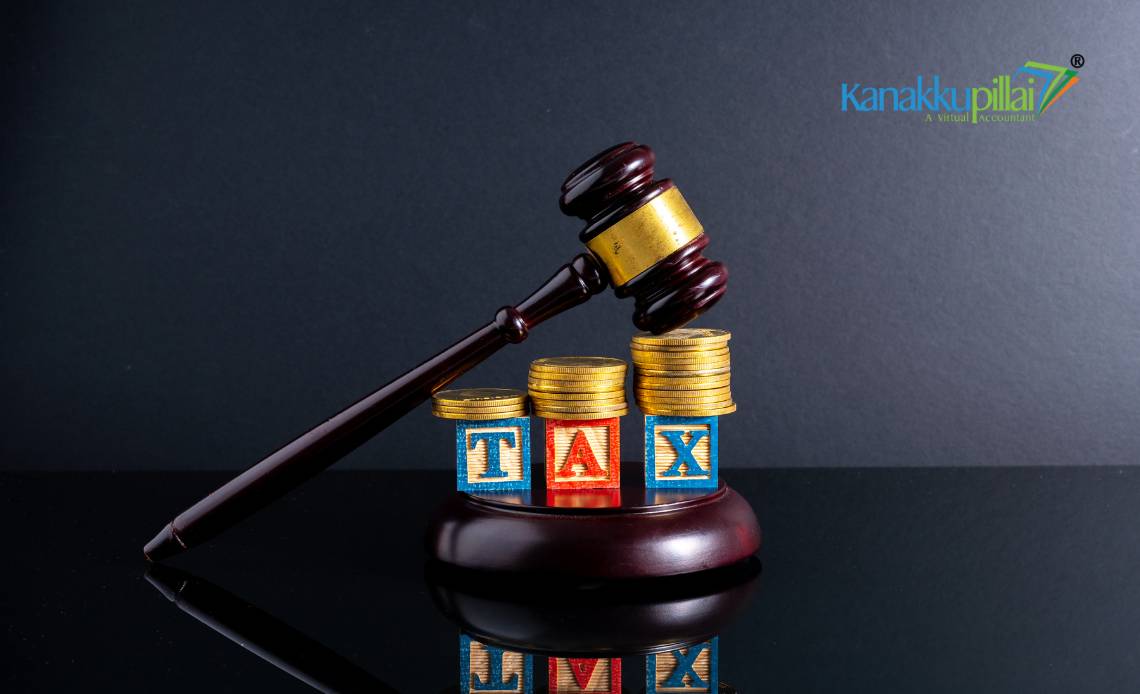Filing an Income Tax Return (ITR) serves as an important financial responsibility for both individuals and businesses as it generates money for the nation and ensures adherence to tax obligations. The responsibilities under the ITR include the reporting of income, tax liabilities, deductions, and exemptions for a specific fiscal year. Timely submission of the ITR will help taxpayers avoid penalties, enable claiming refunds, carry forward losses, and build credibility in financial terms. It has been made much easier than before for the people by digitalization and simplification of tax laws by the Indian government within the ITR filing experience.
Union Budget 2025 is predominantly going to act as the scriptwriting agent for tax policy and the architecture of economic growth. The budget sets forth the contours of direct and indirect taxation, which a salaried employee, businessman, or investor has to heed in the form of putative fiscal measures. Examples of fiscal measures may include changes in tax brackets, deductions and incentives for certain industries. The general wing of the government towards recovery, its usage in digitalisation, and improving it for businesses appears to lead the way to change tax structures and compliance practices. Taxpayers must keep abreast of such changes for enhanced financial planning towards easier ITR filing. The Budget 2025 makes it essential to keep “green” about new regulations in this regard so that people and companies manage effectively taxpayers’ responsibilities.
Major Changes in 2025 Related to ITR Filing
It is expected that the tax filing changes in 2025 would synchronise tax receipts with reliefs available to the taxpayers, middle class, and businesses. In increasing digitization, automation, and compliance framework, it becomes all the more imperative for taxpayers to be abreast of survey reforms so as to ensure timely and accurate submissions. Rather proactive tax planning and advice by professionals would be crucial for effectively managing such changes.
1. New Income Tax Changes
The government is likely to reshape the tax slabs for both the old and new tax regimes. Among the considerations will be how to make the tax structure more concessionary for the middle classes by perhaps hiking the basic exemption limit or lowering rates so that there is more disposable income. In the Union Budget 2025, important changes for the relief of taxpayers on the income tax front were announced by the Indian government to push forward with economic growth. These changes will apply for the Fiscal Year (FY) 2025-26 as per the Assessment Year (AY) of 2026-27.
The new tax regime, which started in 2020, is amended with lower tax rates having minimal exemptions attached to it. The new tax slabs for the financial year 2025-26 are as follows:
- Income up to ₹4,00,000 – no tax.
- Income between ₹4,00,001 and ₹8,00,000
- On the portion exceeding ₹4,00,000, a 5% levy.
- Income between ₹8,00,001 and ₹12,00,000
- An amount of ₹20,000 plus 10% of the amount exceeding ₹8,00,000.
- Income between ₹12,00,001 and ₹16,00,000
- An amount of ₹60,000 plus 15% of the amount exceeding ₹12,00,000.
- An income of ₹16,00,001 – ₹20,00,000 is ₹1,20,000 plus 20% of the amount that exceeds ₹16,00,000.
- A salary between ₹20,00,001 and ₹24,00,000 would pay ₹2,00,000 plus 25% of the amount exceeding ₹20,00,000.
- An individual with an income of more than ₹24,00,000 would be taxed ₹3,00,000 plus 30% on the excess amount.
Employees got a standard deduction available to them now as Rs.75,000, along with pensioners. By this improvement and new tax brackets, all people who earn up to ₹12,75,000 per annum become tax free.
The Union Budget 2025 made modifications to Section 87A of the Income Tax Act, therefore providing immediate relief to taxpayers within the new tax framework, as discussed in detail herein:
2. Restoration of Increased Rebate under Section 87A
The legislative changes for the financial year 2025-26 (assessment year 2026-27) are as follows:
- Introducing the New Tax Regime;
- Raising Ceiling of Existing Rebates from ₹7 lakh to ₹12 lakh to More Individuals.
Eligible taxpayers can now claim a refund of up to ₹60,000 or the total tax owed, whichever is less, which is a significant jump from the previous rebate limit of ₹25,000.
Thus, under the new tax regime, individuals earning a total income of up to ₹12 lakh were not excised as a result of increased rebates. And as an addition to this, individuals can also claim a standard deduction of ₹75,000, so an income earning person will be able to earn up to ₹1275 lakh tax free.
Important points to be noted:
- The section 87A rebate is only for the residents. Non-residents and corporations and partnerships are not eligible for this.
- The increased rebate is only under the new tax structure, while the old one continues to have the previous limit for rebates.
- Such taxpayers who earn a little over ₹12 lakh should explore the possibilities of granting marginal relief under which the tax liability may be eased.
3. Amendments to Standard Deduction and Exemptions
The existing ₹50,000 standard deduction for salaried individuals and senior citizens may be revised. In addition, exemptions under sections 80C, which covers investments made under PPF, EPF and life insurance, and 80D, for health insurance premiums, could be widened. There could also be changes introduced to the HRA and LTA allowances concerning inflation.
4. Making the New Tax Regime Simple
The government has been making efforts to popularize this tax regime, which has come into effect since 2020, and to have it default. This can be further incentivized or modified in 2025 for its attractiveness, whereby some deductions can be introduced or made it taxpayer-friendlier.
5. Expansion of Pre-Filled ITR Forms
To minimise errors and speed up the filing process, the concept of pre-filled Income Tax Return (ITR) forms could be further developed. At present, salary income, interest, and dividend income are pre-filled, but there is a strong possibility that information dealing with capital gains and company transactions will be automatically included.
6. Compliance through Digitalisation and AI Integration
The Income Tax Department is increasingly moving toward AI-driven analysis and deep data analytics for detecting discrepancies in tax filings. Probably, more real-time high-value transaction tracking may come into force, leading toward more compliance and less tax evasion.
7. Revisions to the Structure of Capital Gains Tax
One of the most awaited reforms to come forward is the simplification of the capital gains tax structure. The things that might be included in these changes are standardising tax rates for short-term and long-term capital gains on various assets. Moreover, indexation benefits might be withdrawn or simplified for some types of assets with tax changes for digital assets, including cryptocurrencies and NFTs.
8. Provisions Regarding Enhanced Compliance to TDS/TCS
Bring stricter TDS and TCS concerning international remittances, e-commerce transactions, and significant cash withdrawals. The fine from penalising deviations from TDS norms has been increased.
9. Integration of GST Returns with IT Returns
Businesses would most likely witness a more stringent requirement for the integration of GST and ITR filings to cross-check unmatched reported income and turnover. This will be most relevant to freelancers and small business owners.
10. Incentives for Startups and MSMEs
Proposed tax incentives or concessions for startups and micro, small, and medium enterprises (MSMEs) to promote entrepreneurship. Increased deductions on expenses of research and development, digital transformation, and capacity enhancement initiatives.
11. Regularising Taxation on Rich People
- Higher wealth taxes or high net worth individuals may suffer surcharges.
- It shall come with tougher conditions of disclosure regarding foreign income, investment of offshore, and digital transactions.
12. Revised Compliance Deadlines and Penalties
- Increased penalties for late filing of income tax return (ITR) would be.
- Expectation from redefined proportion of advance tax payments and revenue collection to increase.
Conclusion
Directly impacting the disposable income of taxpayers while rationalising the whole tax structure for middle income earners would improve tax compliance and stimulate economic activity.
The year 2025 will see massive changes to the income tax return (ITR) filing process in India, including initiatives for simple compliance, greater digital integration, and tax relief for individuals and corporations. Changes include new income tax slabs, increased limit of refund under Section 87A, and higher standard deduction, thereby allowing increased savings for middle-class taxpayers. Also, pre-filled ITR forms and AI-driven assessments should allow for the easy submission of tax returns, resulting in error-free and transparent tax filings. Furthermore, changes to capital gains tax rules, stricter TDS and TCS rules, and better integration of GST and ITR will serve to strengthen compliance frameworks for businesses and professionals.
For taxpayers, these changes underline the need to remain vigilant and engage in proactive tax planning. With the government pushing for enhanced digital engagement and monitoring of transactions in real time, accurate reporting on submission will save taxpayers from penalties as well as help their financial survival. Although these reforms will assist the lower and middle-income groups, higher-income earners may experience greater pressure for tax compliance and adjustments in terms of potential surcharge levies.
Commensurate with this tax reform, taxpayers should be encouraged to use online options, consult with their tax consultants, and take full advantage of investment benefits to magnify returns. The reforms of 2025 show that the government is trying its best to drive a fair balance between development and taxpayer convenience, thereby achieving efficiency and accessibility in tax compliance.





